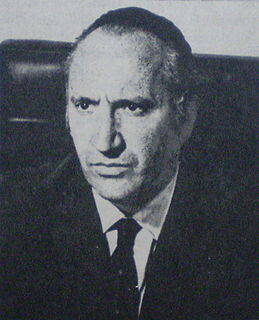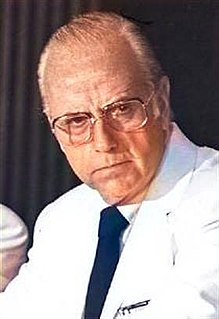Background
Raúl Alfonsín's 1983 inaugural had ushered in a new beginning for Argentina in significant ways, chief among them a new relationship between the Argentine military and government. Economic policy continued to dominate political dynamics, however, a concern exacerbated by the economic crisis inherited from the previous regime. The nation's leading labor union, the CGT was close to Alfonsín's chief opposition, the Justicialist Party, and the tension between the CGT and Alfonsín so evident during 1984 (despite the President's populist early policies) turned to hostility after he replaced the pragmatic Bernardo Grinspun for the more conservative Juan Sourrouille in February 1985. [3] Sorrouille curtailed his predecessor's wage indexation policy (amid 25% monthly inflation), leading to a sudden decline in real wages. Social discontent was compounded by military objections to sharp budget cutbacks, and bomb threats became frequent. [4]

Raúl Ricardo Alfonsín Foulkes was an Argentine lawyer and statesman who served as the President of Argentina from 10 December 1983 to 8 July 1989. Alfonsín was the first democratically elected president after more than seven years of military dictatorship and is considered the "father of modern democracy in Argentina". Born in Chascomús, Buenos Aires Province, he began his studies of law at the National University of La Plata and was a graduate of the University of Buenos Aires. He was affiliated with the Radical Civic Union (UCR), joining the faction of Ricardo Balbín after the party split.

The National Reorganization Process was the name used by its leaders for the military dictatorship that ruled Argentina from 1976 to 1983. In Argentina it is often known simply as la última junta militar or la última dictadura militar or la última dictadura cívico-militar, because there have been several in the country's history.

The General Confederation of Labor of the Argentine Republic is a national trade union federation in Argentina founded on September 27, 1930, as the result of the merger of the USA and the COA trade unions. Nearly one out of five employed - and two out of three unionized workers in Argentina - belong to the CGT, one of the largest labor federations in the world.
Fulfilling a 1983 campaign promise, Alfonsín reacted to military unwillingness to court-martial those guilty of Dirty War abuses (in which up to 30,000 mostly non-violent dissidents perished) by advancing a Trial of the Juntas, whose first hearings were held in April. This bold move was complemented by Sourrouille's June enactment of the Austral Plan, whose centerpiece, the Argentine austral would replace the worthless peso argentino at 1,000 to one. Inflation, which had reached 30% a month in June (1,130% for the year), fell to 2% by August and, though a wage freeze prevented real incomes from rising, these new inflation rates (the lowest since 1974) led to quick recovery from a sharp recession early in the year. Alfonsín enjoyed a 70% job approval rating by the time votes headed to the polls in early November, though he owed none of it to his economic policies, which were supported by only 30% of the public. [5] The strong showing for Alfonsín's centrist UCR resulted, instead, from the Dirty War trial, a risky and daring initiative which had gathered international attention and was, by then, in its closing phase. [4]
The Dirty War is the name used by the military junta or civic-military dictatorship of Argentina for the period of United States-backed state terrorism in Argentina from 1974 to 1983 as a part of Operation Condor, during which military and security forces and right-wing death squads in the form of the Argentine Anticommunist Alliance hunted down any political dissidents and anyone believed to be associated with socialism, left-wing Peronism or the Montoneros movement.

The Trial of the Juntas was the judicial trial of the members of the de facto military government that ruled Argentina during the dictatorship of the Proceso de Reorganización Nacional, which lasted from 1976 to 1983.
The austral was the currency of Argentina between June 15, 1985 and December 31, 1991. It was subdivided into 100 centavos. The symbol was an uppercase A with an extra horizontal line, code point U+20B3










